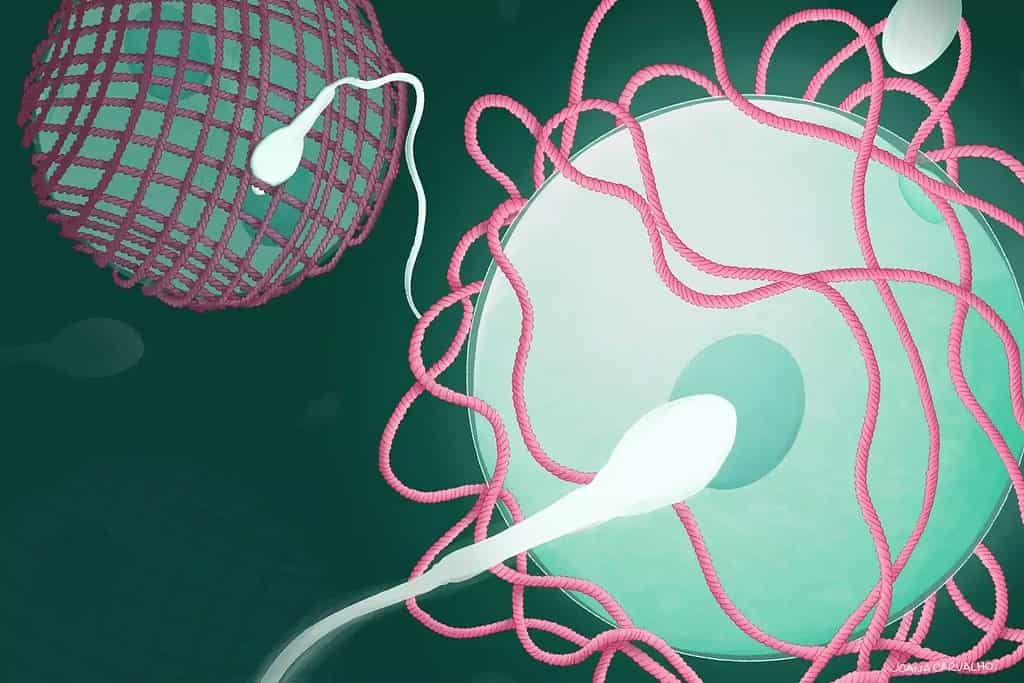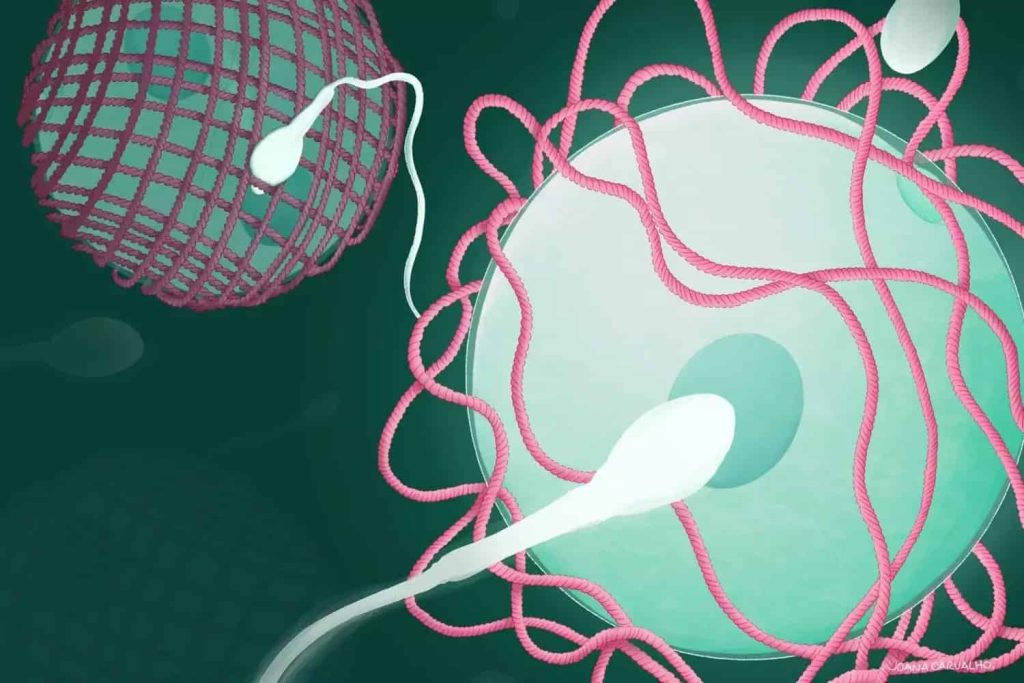
Millions of sperm face several challenges on their journey to the egg, including the acidic vaginal environment, the cervix's mucus, wrong turns in the uterus, and the final challenge of penetrating the protective egg layer known as the zona pellucida.
Only a few hundred sperm come close to the egg, but ultimately, only one is successful.
Researchers at the Karolinska Institutet in Sweden have made a breakthrough in understanding the regulation of fertilization in mammals. They discovered that after fertilization, the egg coat tightens to create a barrier that prevents additional sperm, ultimately preventing a potentially lethal condition for the embryo called polyspermy.
The egg coat has long been a mystery.
The team used advanced techniques to analyze the 3D structure of egg coat proteins, including X-ray crystallography and cryo-electron microscopy, as well as Google's AI program. AlphaFold To predict the structure of the human egg coat, they combined these techniques with functional studies in mice to explore the impact of ZP2 protein mutations on fertility.
The study revealed the structure and important role of a protein called ZP2 within the egg coat. It transforms after fertilization to create a barrier against additional sperm, ensuring only one sperm can fertilize the egg. This discovery, led by Professor Luca Jovine of the Karolinska Institutet, is a significant advancement in reproductive biology.Professor Luca Jovine of the Karolinska Institutet explained, "It was known that ZP2 is cleaved after the first sperm has entered the egg, and we explain how this event makes the egg coat harder and impermeable to other sperm."
Luca Jovine, who led the study, is a Professor at the Department of Biosciences and Nutrition at the Karolinska Institutet. Luca JovineThe protective layer around the egg after fertilization is crucial for female fertility, as it safeguards the embryo until it attaches to the womb. Understanding this could lead to new contraceptive methods that target this protective layer, rather than using hormones. It could also provide insight into certain cases of female infertility involving the egg coat. "Mutations in the genes encoding egg coat proteins can cause female infertility, and more and more such mutations are being discovered," said Luca Jovine. "We hope that our study will contribute to the diagnosis of female infertility and, possibly, the prevention of unwanted pregnancies."Luca Jovine, who led the study, is a Professor at the Department of Biosciences and Nutrition at the Karolinska Institutet.
In an unexpected finding, the team learned that a segment of the ZP2 protein, previously thought to be a sperm receptor, is not essential for sperm attachment. This raises the question of what the true sperm receptor on the egg coat is, which the researchers plan to investigate in the future.
Defects in the genes for egg coat proteins can cause female infertility, and the team hopes their study will contribute to diagnosing and potentially preventing unwanted pregnancies.
In an unexpected twist, the team discovered that a portion of the ZP2 protein, previously thought to be a receptor for sperm, is not necessary for sperm attachment. This leads to the question of what truly serves as the sperm receptor on the egg coat, a topic the Swedish researchers plan to explore further.
The results were published in the journal Cell.
Was this helpful?
Related Posts
- Gold mining with mercury creates health risks for people living hundreds of miles downstream
- The slowdown in human activity caused by the coronavirus is now detectable in seismic waves
- Are call center operators no longer needed in the era of AI? Not so quick
- The Swedish model: a year later, the distinct approach to the pandemic still isn't successful









